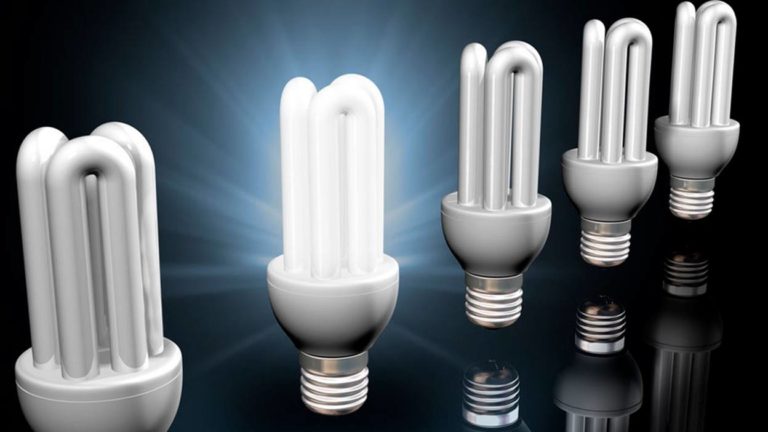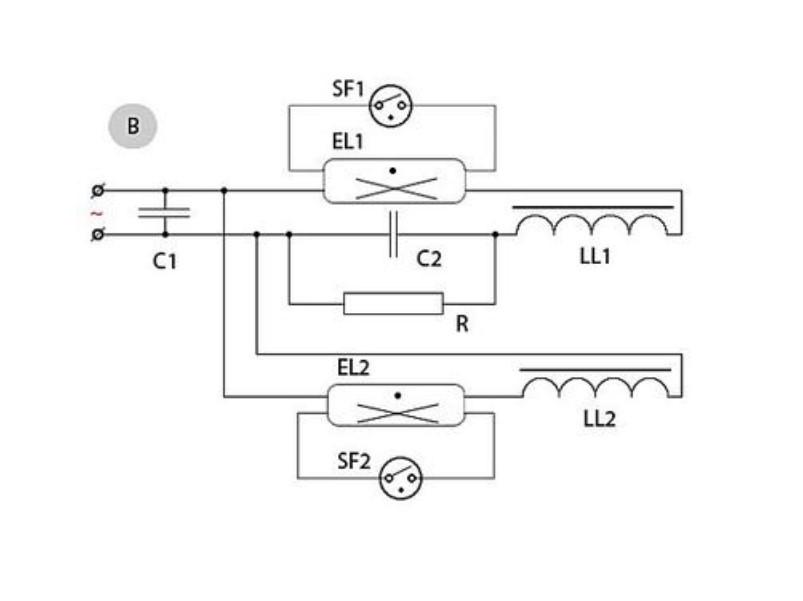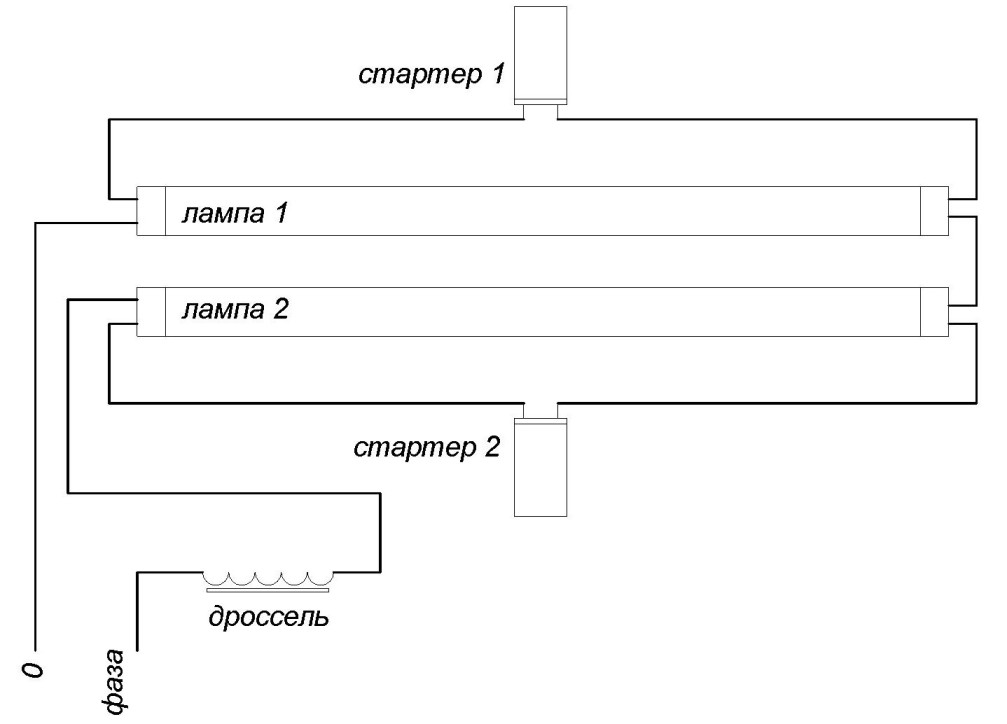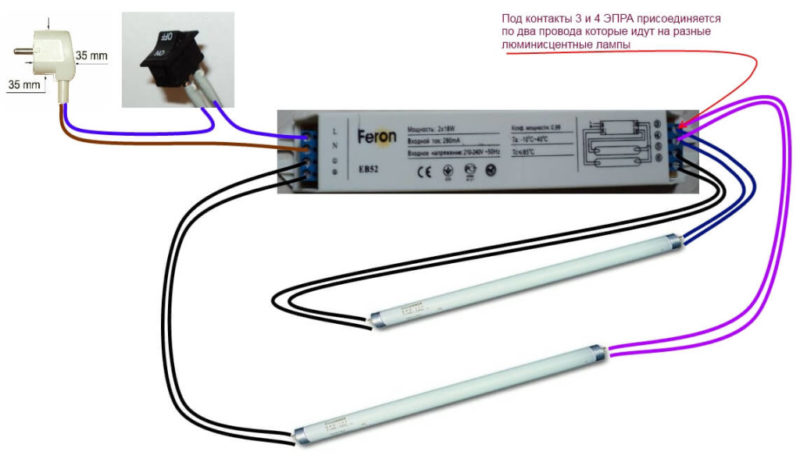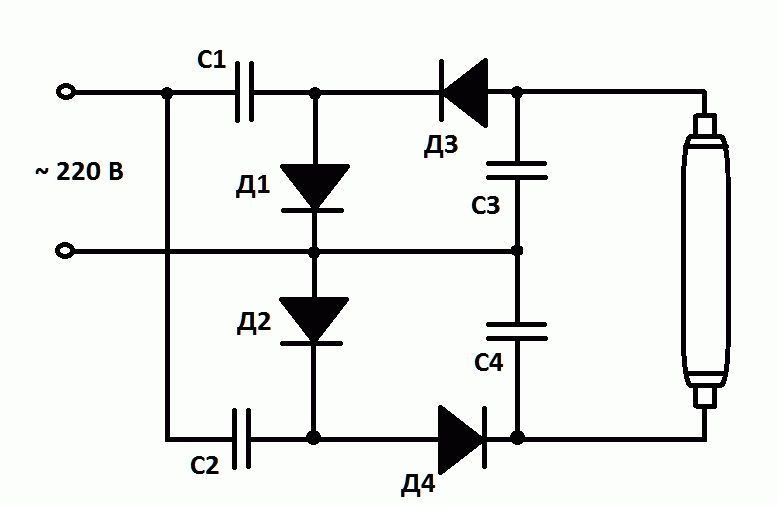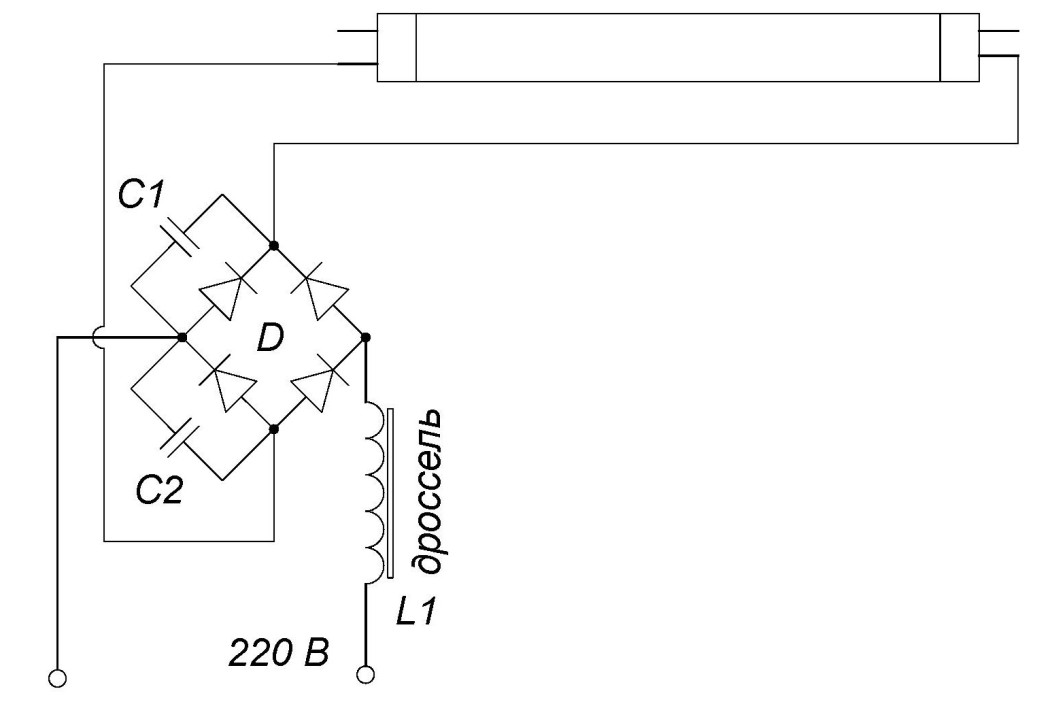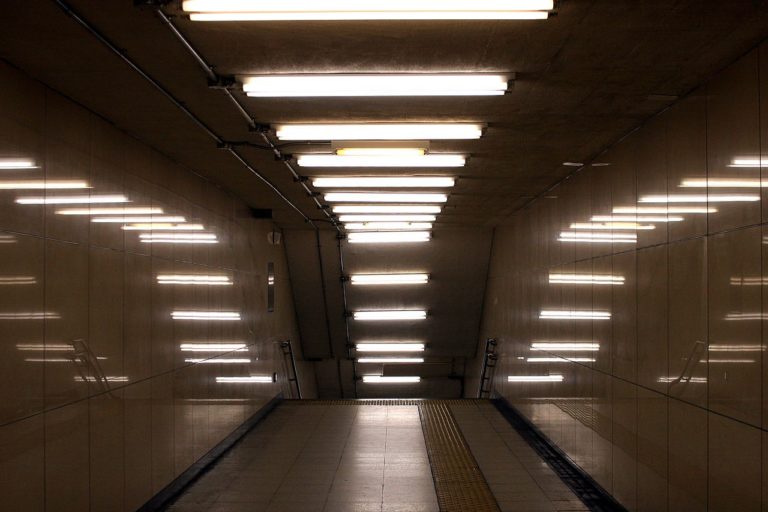How to properly connect a fluorescent bulb
Fluorescent lamps remain in demand despite the proliferation of LED luminaires. This is due to their power, efficiency and excellent color rendering. When connecting fluorescent fixtures, it is important to consider the features of the equipment.
The device of fluorescent lamps
The scheme of connection of an ordinary fluorescent lamp differs significantly from a similar circuit incandescent devices. They consist of the main components:
- A control board that regulates the flow of current;
- electrodes;
- A glass tube or bulb coated with a phosphor.
Inside the bulb is a mixture of mercury vapor and inert gases, and the electrodes. The input voltage causes the particles to move, generating ultraviolet radiation. However, it is invisible to the human eye. It is converted into visible light by the phosphor coated on the inside of the bulb. Changing the composition of the phosphor changes the hue and color temperature of the light.
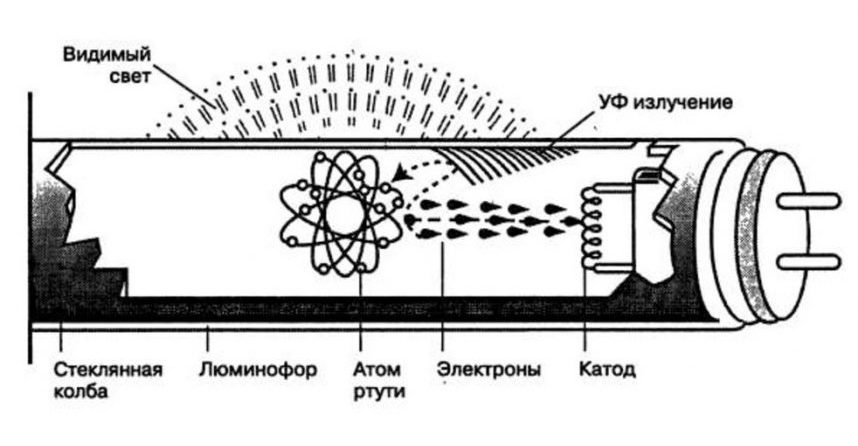
The processes are controlled by a starter and a ballast that stabilize the voltage and ensure uniform illumination without pulsations and flicker.
How to connect the lamp
A fluorescent lamp can be connected in several ways. The choice depends on operating conditions and user preference.
Connection using electromagnetic ballast
The common method of connection using a starter and ECG. The mains supply starts the starter, which short-circuits the bimetallic electrodes.
The current limitation in the circuit is accomplished by an internal choke. The operating current can be increased almost threefold. The rapid heating of the electrodes and the occurrence of a self-induction process causes the ignition.
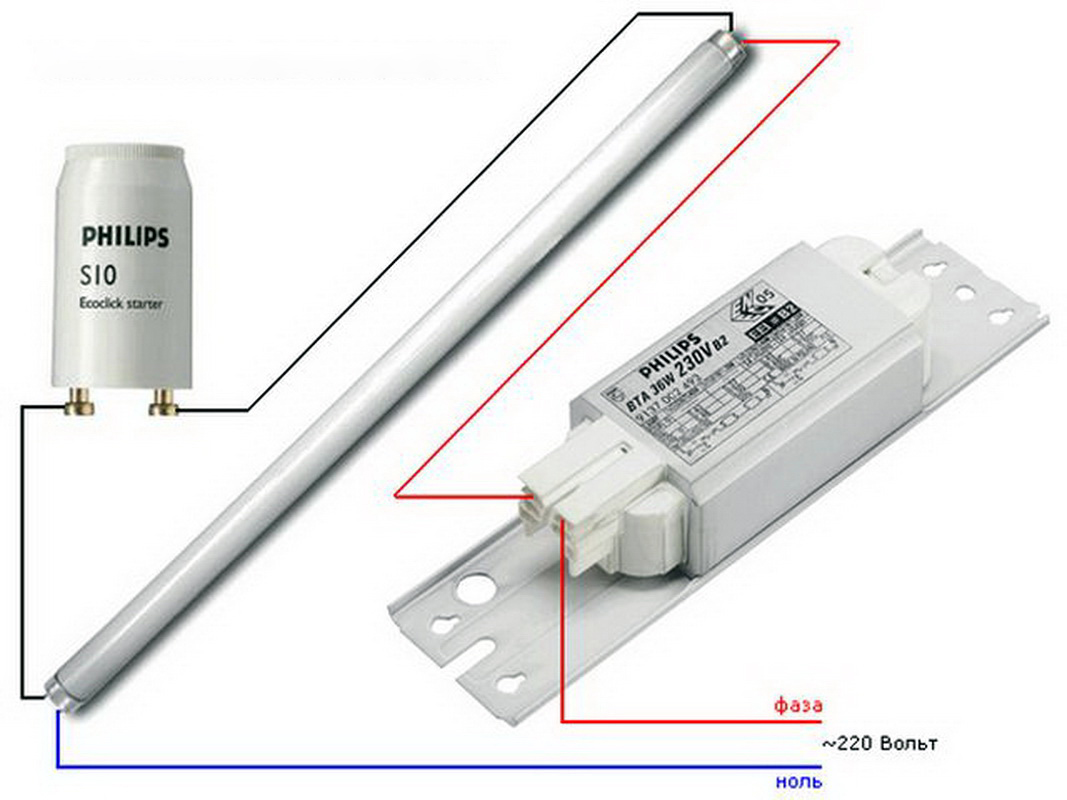
Comparing the method with other schemes for connecting fluorescent lamps, you can formulate the disadvantages:
- Significant power consumption;
- long start-up time, which can take 3 seconds;
- the scheme is not able to function in conditions of low temperatures;
- undesirable stroboscopic flashing, negatively affecting vision;
- throttle plates may hum as they wear.
The circuit includes one choke per two bulbs; the method will not work for a single bulb system.
Two tubes and two chokes
In this case, a series connection of loads is implemented, with phase to the input of the resistor.
The output through the phase is connected to the contact of the lighting fixture. The second contact is routed to the desired starter input.
From the starter the contact goes to the lamp, and the free pole goes to the zero of the circuit. The second lamp is connected in the same way. The choke is connected, and then the bulb is mounted.
Diagram for connecting two lamps from one choke
Two starters are required to connect two lights from one stabilizer. The circuit is economical because the choke is the most expensive component in the system. The circuit is shown in the figure below.
Electronic ballast
The electronic ballast is the modern equivalent of a conventional electromagnetic stabilizer. It greatly improves the start-up of the circuit and makes the use of the lighting fixture more comfortable.
Such devices do not hum during operation and consume much less electricity. Flicker does not appear even at low voltage frequencies.
The current coming to the load is rectified through a diode bridge. This smoothes out the voltage and the capacitors guarantee a stable power supply.
The transformer windings in this case are switched in opposite phase, and the generator is loaded with high-frequency voltage. When the resonant voltage is applied, a gas breakdown occurs inside the bulb, which generates the necessary glow.
Immediately after ignition, the resistance and the applied voltage to the load drop. Starting up with the circuit usually takes no more than a second. And it is easy to use light sources without a starter.
Using voltage multipliers
The method helps to use a fluorescent lamp without electromagnetic balancing. In some cases, it is most effective and prolongs the life of the unit. Even burned out devices are capable of working for some time at powers not exceeding 40 watts.
The rectification scheme gives a significant acceleration and the possibility of doubling the voltage. Capacitors are used to stabilize it.
Topical video: Details about the voltage multiplier
It is important to remember that fluorescent light bulbs are not designed to operate with a constant current. Over time, the mercury accumulates in a certain area, which reduces the brightness. To restore the indicator, you need to periodically reverse the polarity by flipping the bulb. A switch can be installed so that you don't have to disassemble the unit.
Connection without starter
The starter increases the warm-up time of the device. However, it is short-lived, so users are thinking about connecting lights without it through secondary transformer windings.
On sale you can find devices with the marking RS, which indicates the possibility of connection without a starter. Installing such an element in the light fixture helps significantly reduce the ignition time.
Connecting two bulbs in series
The method involves operating two bulbs with one ballast. The implementation requires an induction choke and starters.
It is necessary to connect a starter to each lamp each starter must be connected, observing parallelism connection. The free contacts of the circuit are routed to the mains through a choke. Capacitors are connected to the contacts to reduce interference and stabilize the voltage.
High starting currents in the circuit often cause contact sticking in the switches, so select high-quality models, which are not much affected by the performance of the network.
How to test a lamp
After plugging in Check for proper operation After plugging in check the functionality of the circuit with a tester. The resistance of the cathode rails should not exceed 10 ohms.
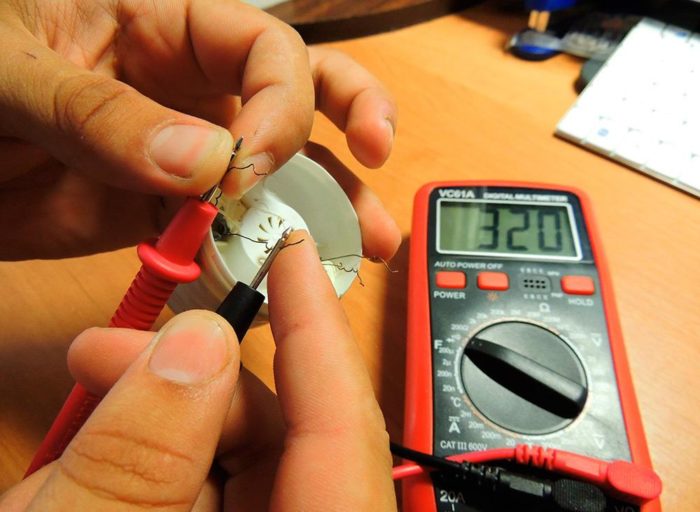
Sometimes the tester shows infinite resistance. This does not mean it is time to throw the lamp away. The tester can be turned on with a cold start. Usually the starter contacts are open and the capacitor does not allow DC current to flow. However, after a few touches with the feeler gauges the reading will stabilize and go down to a few tens of ohms.
Replacing a Lamp
Like other light sources, fluorescent fixtures fail. The only solution is to replace the main element.
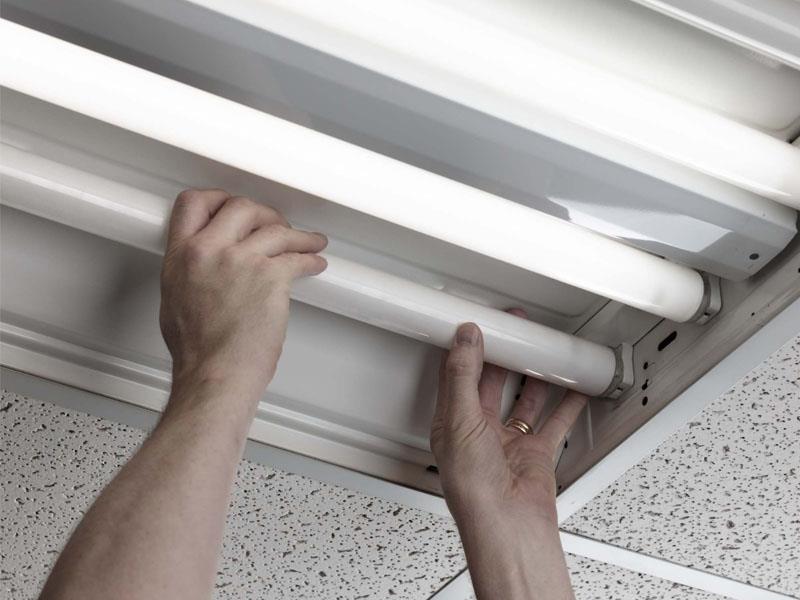
The replacement process on the example of Armstrong ceiling fixture:
- Carefully disassemble the luminaire. Taking into account the arrows indicated on the body, the bulb is turned on its axis.
- Turning the bulb 90 degrees, you can lower it down. The contacts will be displaced and come out through the holes.
- Place the new bulb in the groove, making sure the contacts fit into the appropriate holes. Turn the installed tube in the opposite direction. A "click" is heard as it locks into place.
- Turn on the luminaire and check that it works.
- Assemble the body and install the diffuser.
If the newly installed bulb has burned out again, it makes sense to check the choke. It may be the one that is supplying too much voltage to the device.
